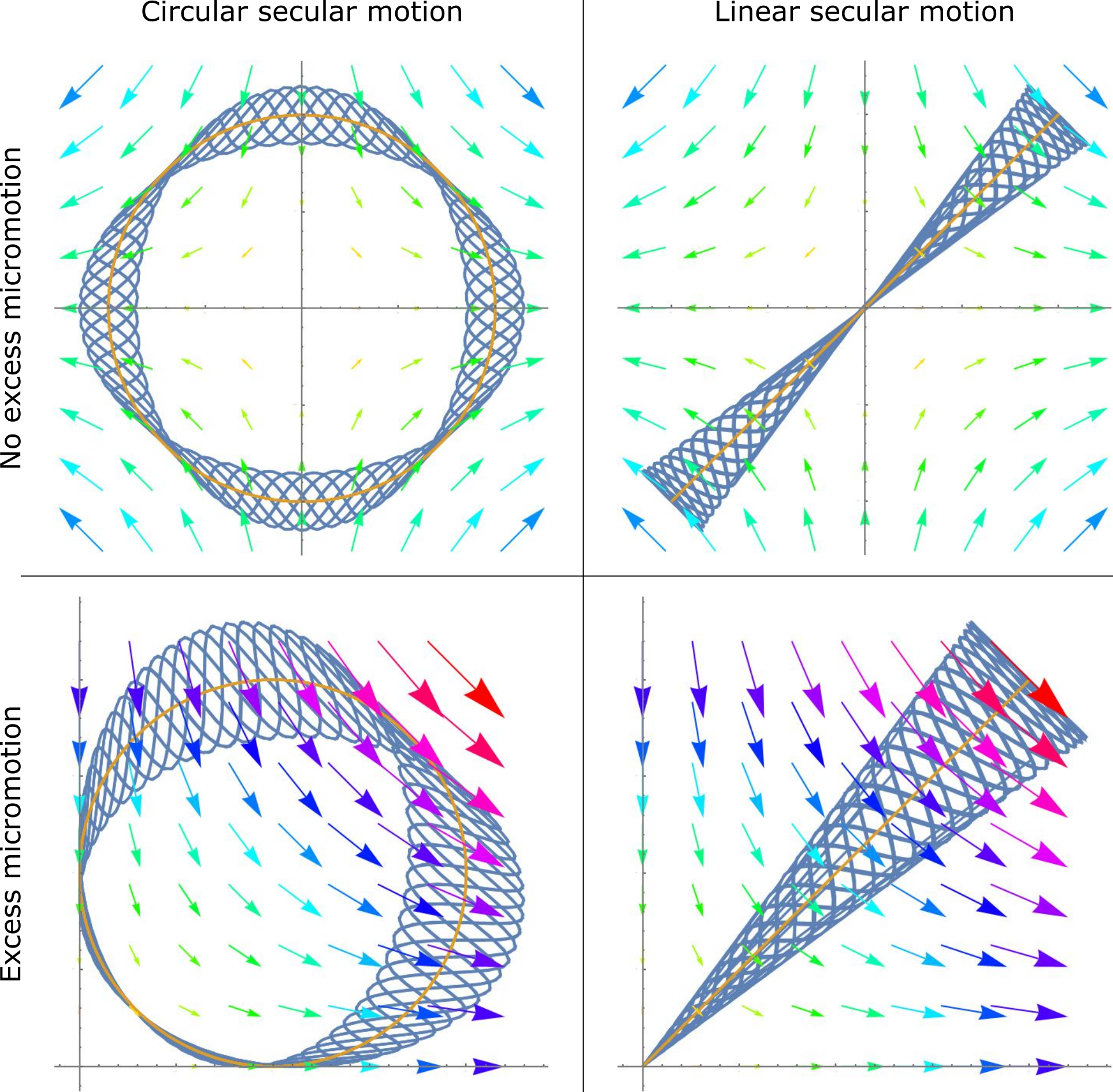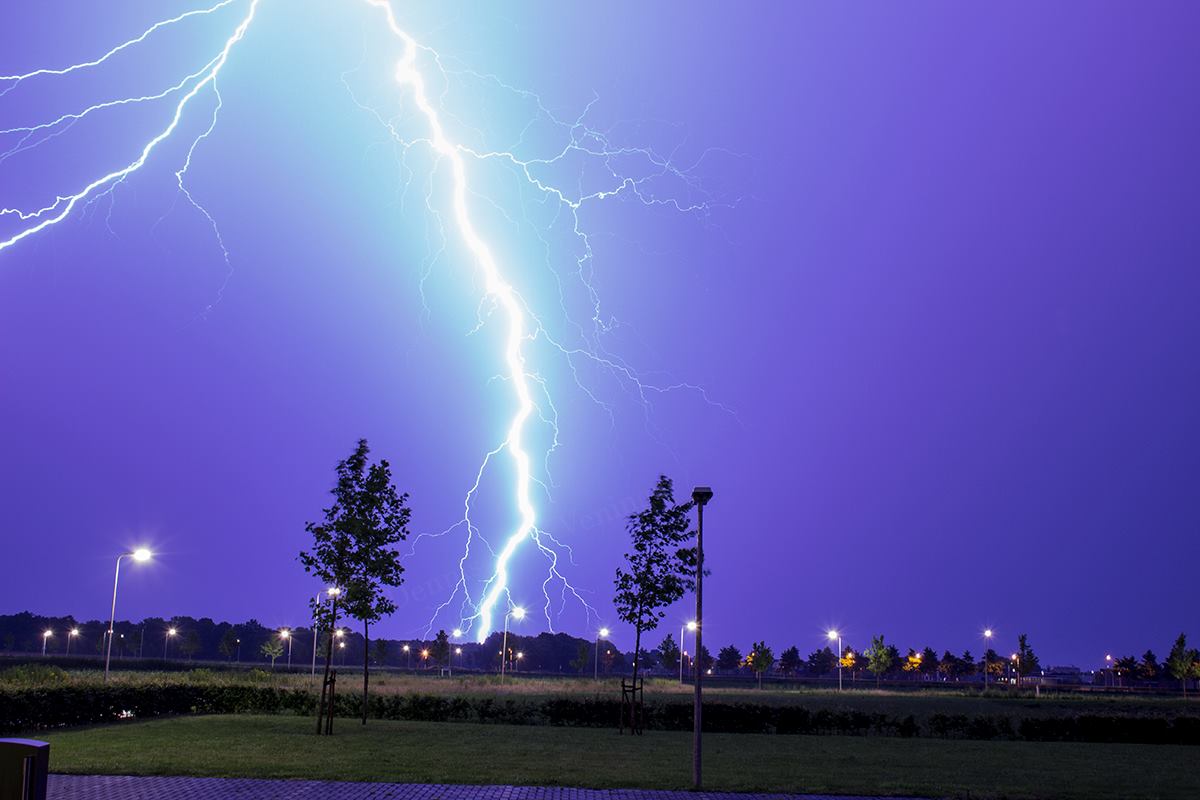|
Magnetodynamic Force
In physics, a ponderomotive force is an nonlinear force that a charged particle experiences in an inhomogeneous oscillating electromagnetic field. It causes the particle to move towards the area of the weaker field strength, rather than oscillating around an initial point as happens in a homogeneous field. This occurs because the particle sees a greater magnitude of force during the half of the oscillation period while it is in the area with the stronger field. The net force during its period in the weaker area in the second half of the oscillation does not offset the net force of the first half, and so over a complete cycle this makes the particle accelerate towards the area of lesser force. The classical expression for the ponderomotive force Fp is :\mathbf_= -\frac \nabla (\hat E^2) which has units of newtons (in SI units) and where ''e'' is the electrical charge of the particle, ''m'' is its mass, ''ω'' is the angular frequency of oscillation of the field, and \hat E is ... [...More Info...] [...Related Items...] OR: [Wikipedia] [Google] [Baidu] |
Circular Polarization
In electrodynamics, circular polarization of an electromagnetic wave is a polarization state in which, at each point, the electromagnetic field of the wave has a constant magnitude and is rotating at a constant rate in a plane perpendicular to the direction of the wave. In electrodynamics, the strength and direction of an electric field is defined by its electric field vector. In the case of a circularly polarized wave, the tip of the electric field vector, at a given point in space, relates to the phase of the light as it travels through time and space. At any instant of time, the electric field vector of the wave indicates a point on a helix oriented along the direction of propagation. A circularly polarized wave can rotate in one of two possible senses: ''right-handed circular polarization (RHCP)'' in which the electric field vector rotates in a right-hand sense with respect to the direction of propagation, and ''left-handed circular polarization (LHCP)'' in which the vecto ... [...More Info...] [...Related Items...] OR: [Wikipedia] [Google] [Baidu] |
Terahertz Time-domain Spectroscopy
In physics, terahertz time-domain spectroscopy (THz-TDS) is a spectroscopic technique in which the properties of matter are probed with short pulses of terahertz radiation. The generation and detection scheme is sensitive to the sample's effect on both the amplitude and the phase of the terahertz radiation. Explanation Typically, an ultrashort pulsed laser is used in the terahertz pulse generation process. In the use of low-temperature grown GaAs as an antenna, the ultrashort pulse creates charge carriers that are accelerated to create the terahertz pulse. In the use of non-linear crystals as a source, a high-intensity ultrashort pulse produces THz radiation from the crystal. A single terahertz pulse can contain frequency components covering much of the terahertz range, often from 0.05 to 4 THz, though the use of an air plasma can yield frequency components up to 40 THz. After THz pulse generation, the pulse is directed by optical techniques, focused through a sample, then mea ... [...More Info...] [...Related Items...] OR: [Wikipedia] [Google] [Baidu] |
Quadrupole Ion Trap
In experimental physics, a quadrupole ion trap or paul trap is a type of ion trap that uses dynamic electric fields to trap charged particles. They are also called radio frequency (RF) traps or Paul traps in honor of Wolfgang Paul, who invented the device and shared the Nobel Prize in Physics in 1989 for this work. It is used as a component of a mass spectrometer or a trapped ion quantum computer. Overview A charged particle, such as an atomic or molecular ion, feels a force from an electric field. It is not possible to create a static configuration of electric fields that traps the charged particle in all three directions (this restriction is known as Earnshaw's theorem). It is possible, however, to create an ''average'' confining force in all three directions by use of electric fields that change in time. To do so, the confining and anti-confining directions are switched at a rate faster than it takes the particle to escape the trap. The traps are also called "radio frequenc ... [...More Info...] [...Related Items...] OR: [Wikipedia] [Google] [Baidu] |
Electrodeless Plasma Thruster
The electrodeless plasma thruster is a spacecraft propulsion engine commercialized under the acronym "E-IMPAcT" for "Electrodeless-Ionization Magnetized Ponderomotive Acceleration Thruster". It was created by Gregory Emsellem, based on technology developed by French Commissariat à l'Énergie Atomique, Atomic Energy Commission scientist Dr Richard Geller (physicist), Richard Geller and Dr. Terenzio Consoli, for high speed Plasma (physics), plasma beam production. The electrodeless plasma (physics), plasma thruster was developed and adapted to various spacecraft propulsion needs bThe Elwing Companybetween 2002 and 2015. Operating principle # Propellant is injected at the upstream side of the thruster body. In cases where the propellant used is not gaseous (e.g., alkali metals) at the local temperature, the propellant must be vaporized. # Gaseous propellant is ionized by one of the following methods: #* bombarding the propellant with electrons emitted by a hot cathode or by an ele ... [...More Info...] [...Related Items...] OR: [Wikipedia] [Google] [Baidu] |
Plasma Propulsion Engine
A plasma propulsion engine is a type of electric propulsion that generates thrust from a quasi-neutral Plasma (physics), plasma. This is in contrast with ion thruster engines, which generate thrust through extracting an ion current from the Plasma (physics), plasma source, which is then accelerated to high velocities using grids of anodes. These exist in many forms (see electric propulsion). However, in the scientific literature, the term "plasma thruster" sometimes encompasses thrusters usually designated as "Ion thruster, ion engines". Plasma thrusters do not typically use high voltage grids or anodes/cathodes to accelerate the charged particles in the plasma, but rather use currents and potentials that are generated internally to accelerate the ions, resulting in a lower exhaust velocity given the lack of high accelerating voltages. This type of thruster has a number of advantages. The lack of high voltage grids of anodes removes a possible limiting element as a result of ... [...More Info...] [...Related Items...] OR: [Wikipedia] [Google] [Baidu] |
Plasma Acceleration
Plasma acceleration is a technique for accelerating charged particles, such as electrons or ions, using the electric field associated with an electron plasma wave or other high-gradient plasma structures. These structures are created using either ultra-short laser pulses or energetic particle beams that are matched to the plasma parameters. The technique offers a way to build affordable and compact particle accelerators. Fully developed, the technology could replace many of the traditional accelerators with applications ranging from high energy physics to medical and industrial applications. Medical applications include betatron and free-electron light sources for diagnostics or radiation therapy and proton sources for hadron therapy. History The basic concepts of plasma acceleration and its possibilities were conceived by Toshiki Tajima and John M. Dawson of UCLA in 1979. The initial experimental designs for a "wakefield" accelerator were developed at UCLA by Chandrash ... [...More Info...] [...Related Items...] OR: [Wikipedia] [Google] [Baidu] |
Vlasov Equation
In plasma physics, the Vlasov equation is a differential equation describing time evolution of the distribution function of collisionless plasma consisting of charged particles with long-range interaction, such as the Coulomb interaction. The equation was first suggested for the description of plasma by Anatoly Vlasov in 1938 and later discussed by him in detail in a monograph. The Vlasov equation, combined with Landau kinetic equation describe collisional plasma. Difficulties of the standard kinetic approach First, Vlasov argues that the standard kinetic approach based on the Boltzmann equation has difficulties when applied to a description of the plasma with long-range Coulomb interaction. He mentions the following problems arising when applying the kinetic theory based on pair collisions to plasma dynamics: # Theory of pair collisions disagrees with the discovery by Rayleigh, Irving Langmuir and Lewi Tonks of natural vibrations in electron plasma. # Theory of pair collisi ... [...More Info...] [...Related Items...] OR: [Wikipedia] [Google] [Baidu] |
Plasma (physics)
Plasma () is a state of matter characterized by the presence of a significant portion of charged particles in any combination of ions or electrons. It is the most abundant form of ordinary matter in the universe, mostly in stars (including the Sun), but also dominating the rarefied intracluster medium and Outer space#Intergalactic space, intergalactic medium. Plasma can be artificially generated, for example, by heating a neutral gas or subjecting it to a strong electromagnetic field. The presence of charged particles makes plasma electrically conductive, with the dynamics of individual particles and macroscopic plasma motion governed by collective electromagnetic fields and very sensitive to externally applied fields. The response of plasma to electromagnetic fields is used in many modern devices and technologies, such as plasma display, plasma televisions or plasma etching. Depending on temperature and density, a certain number of neutral particles may also be present, in wh ... [...More Info...] [...Related Items...] OR: [Wikipedia] [Google] [Baidu] |
Undulator
An undulator is an insertion device from high-energy physics and usually part of a larger installation, a synchrotron storage ring, or it may be a component of a free electron laser. It consists of a periodic structure of dipole magnets. These can be permanent magnets or superconducting magnets. The static magnetic field alternates along the length of the undulator with a wavelength \lambda_u. Electrons traversing the periodic magnet structure are forced to undergo oscillations and thus to radiate energy. The radiation produced in an undulator is very intense and concentrated in narrow energy bands in the spectrum. It is also collimated light, collimated on the orbit plane of the electrons. This radiation is guided through beamlines for experiments in various scientific areas. The undulator strength parameter is: :K=\frac, where ''e'' is the electron charge, ''B'' is the magnetic field, ''\lambda_u'' is the spatial period of the undulator magnets, ''m_'' is the electron rest mass ... [...More Info...] [...Related Items...] OR: [Wikipedia] [Google] [Baidu] |
Dispersion Relation
In the physical sciences and electrical engineering, dispersion relations describe the effect of dispersion on the properties of waves in a medium. A dispersion relation relates the wavelength or wavenumber of a wave to its frequency. Given the dispersion relation, one can calculate the frequency-dependent phase velocity and group velocity of each sinusoidal component of a wave in the medium, as a function of frequency. In addition to the geometry-dependent and material-dependent dispersion relations, the overarching Kramers–Kronig relations describe the frequency-dependence of wave propagation and attenuation. Dispersion may be caused either by geometric boundary conditions ( waveguides, shallow water) or by interaction of the waves with the transmitting medium. Elementary particles, considered as matter waves, have a nontrivial dispersion relation, even in the absence of geometric constraints and other media. In the presence of dispersion, a wave does not propagate with ... [...More Info...] [...Related Items...] OR: [Wikipedia] [Google] [Baidu] |







